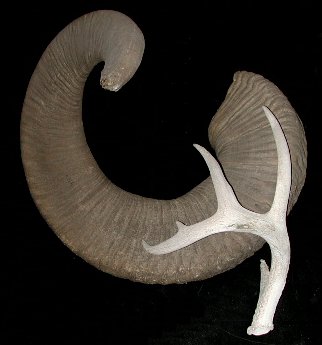

An unfortunate tendency in people is to call different things by the same name, resulting in inefficient communication and potential danger. The classic case is a parent, attempting to get a child to take some medicine, calling the medicine candy; how many cases have there been where children have sickened or died because they later helped themselves to "candy".
Less important, but still a matter of poor communication, is the habit
of many of us calling both horns and antlers, horns. We have horn-bearers and
antler-bearers in the Chihuahuan Desert, but they belong to very different kinds of
animals. The Desert Bighorn has horns, consisting of a sheath of horn borne on a core
of bone projecting from the skull and never shed. A Mule Deer has antlers, bony
projections of the skull that shed annually. What they do have in common is that they
are structures primarily for disputes among their own kind, rather than for defense
from predators. Horns and antlers are mostly for competition for females among males of
their species. Same objective, different tools.

Listen to the Audio (mp3 format) as recorded by KTEP, Public Radio for the Southwest.
Contributor: Arthur H. Harris, Laboratory for Environmental Biology, Centennial Museum, University of Texas at El Paso.
Desert Diary is a joint production of the Centennial Museum and KTEP National Public Radio at the University of Texas at El Paso.

The large horn of a Mountain Sheep and the very different antler of a White-tailed Deer. Photograph by A.H. Harris of Laboratory for Environmental Biology specimens.